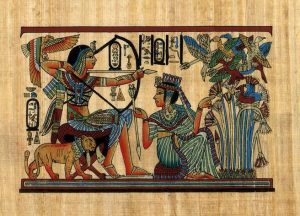Egyptian Stories, since time immemorial, have been told to each generation in all civilizations till the present age. Ancient Egyptians were in no way separate from this trend, the culture of storytelling flourished in Egypt during that time. Stories were told for their entertainment value as well as carried a hidden meaning, most often amoral.

The first concrete evidence of a story which had a date has been deduced to be from the Middle Kingdom and the language is that of the same region and has classical undertones.
Unfortunately, most of the stories passed from word to mouth, orally from parents to child, storytellers to the masses without being pinned down. People went around spreading these Egyptian Stories by oration and therefore, very few written versions are remaining.
However, thanks to the tradition of orally passing on the stories, a lot many of the most well-known stories are being circulated to this day. Sinuhe is among the much more older and favorites of the stories. It was written in 6 papyruses and twenty-four Ostracas.
This story was written by a courtier in the first person, as a sort of a biography. He had gone from ancient Egypt to Asia after Pharaoh Amanamhat died. The reason for this flight is not given in the story. This is one of the few written Egyptian Stories that are still surviving.
Autobiographies
Ancient Egyptian writings were more or less in the form of autobiographies and were written exceedingly well. The “weni”, is an autobiography, one of the better-known ones. This was taken from the tomb of Weni situated in Abydos. Weni was a courtier and was supposedly a confidante of the pharaoh Teti and Pepi. However, this account may be a trifle farfetched.
The “cow of heaven” and “destruction of mankind” are two books which came to be written during the second half of the 18th century upon the gold tomb of Tutankhamen. These are myths preserved in stone, literally. This is a story of the god of the sun, Ra was rebelled against by the world of men.
Then he sent Hathor in the shape of a lioness to destroy those who rebelled. But when Ra was recalled, Ra refused and had to be tricked into coming back. She drank red wine that could be mistaken as blood and thereby saved the entire mankind from destruction.
The ancient Egyptians also had their folk tales or fairy tales. For example, the tale of two brothers, the prince and his fates and much later, the fable of Setne Kam was the offspring of Ramses II.
There were stories regarding the creation of the Lower and Upper Egypt. It began with the existence of the ocean and nothing else. The ancient Egyptians had a fantastic imagination; their stories bear witness to the fact.
